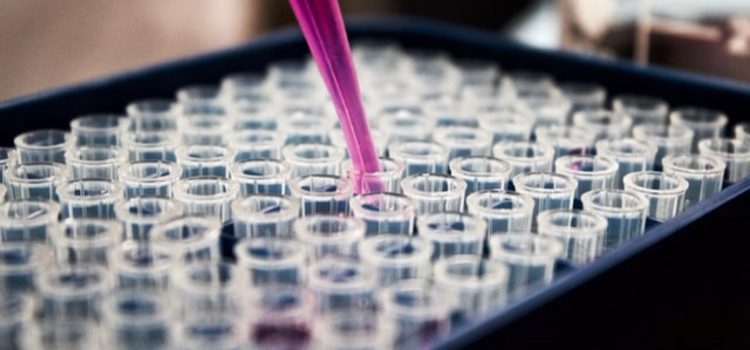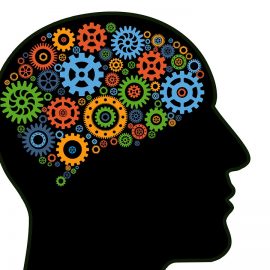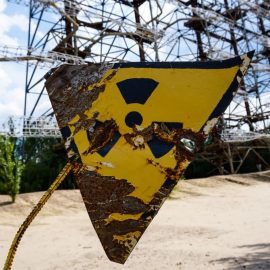

This article is an excerpt from the Shortform book guide to "The Emperor of All Maladies" by Siddhartha Mukherjee. Shortform has the world's best summaries and analyses of books you should be reading.
Like this article? Sign up for a free trial here .
What causes cancer? How much do we currently know about cancer etiology?
Until relatively recently, our knowledge of cancer and its causes was very limited. Although we’ve come far in our understanding of cancer, we still have a lot to learn about the disease and its causes.
Keep reading to learn about the advancements in our understanding of cancer and its causes.
What Causes Cancer?
According to Mukherjee, the author of The Emperor of All Maladies, cancer has probably existed for as long as our species has—for example, a human jawbone dated to approximately 2 million BC shows signs of a cancerous tumor invading it. However, cancer was extremely rare until recently because most people died young, and cancer rates increase exponentially with age.
In 130 AD the Greek physician Galen asserted that an imbalance of black bile in the body causes cancer. While Galen was wrong (in fact, there’s no such thing as “black bile”), Mukherjee says this theory was remarkable for recognizing that cancer is a systemic issue (affecting the entire body) rather than a localized tumor. Modern medicine wouldn’t rediscover that fact for nearly two millennia.
(Shortform note: Galen’s black bile theory—and the fact that it was clearly disproven later—illustrates an important point about scientific advancement: As Thomas Kuhn explains it in The Structure of Scientific Revolutions, science advances by disproving what’s false, rather than discovering what’s true. In other words, scientific progress isn’t about becoming “more right” so much as it’s about becoming “less wrong.”)
In 1775, surgeon Percivall Pott noted that a certain type of scrotal cancer appeared almost exclusively in chimney sweeps. He eventually concluded that soot particles lodged in the skin had caused it. This finding had two major implications:
- Something external (a carcinogen) caused the cancer, as opposed to Galen’s “imbalance of black bile.”
- If cancer has definite external causes, it should be possible to prevent cancer by limiting exposure to those carcinogens.
(Shortform note: While Pott was correct that carcinogens exist, and that limiting exposure to them is an important way to prevent cancer, in practice it might be more difficult than he expected. The latest Report on Carcinogens from the US Department of Health and Human Services lists 256 substances that Americans are commonly exposed to, and that are either known or suspected to increase cancer risk. The list includes common substances like alcohol, wood dust, and soot—therefore, totally avoiding carcinogens would be extremely impractical.)
Advancements in Understanding (1900-1950)
In 1914, biologist Theodor Boveri observed that cancer cells all have chromosomal abnormalities: damage or mutations in the cell’s DNA. He theorized that chromosomal damage causes cancer.
| What Is DNA? Boveri’s discovery in 1914 was the beginning of what we know about cancer today: It’s a corruption of our DNA. Therefore, to understand cancer, you must first understand what healthy DNA does, and how. Your genes are made of DNA (deoxyribonucleic acid). It’s like a cellular blueprint: DNA carries instructions on how to create proteins, which your body then uses for countless functions such as repairing tissue damage and transporting nutrients where they’re needed. Some of those proteins also help with the process of mitosis, replicating the DNA and helping the cell to divide in order to create new cells. If the DNA gets damaged or mutated, those instructions become garbled. In rare cases, they become garbled in such a way that the cell goes haywire: Mitosis happens much too quickly and much too frequently, leading to cancerous tumors. |
Advancements in Understanding (1950 – 2010)
According to Mukherjee, the period from 1950 to 2010 saw researchers working to understand and treat cancer at the microscopic level. Many doctors believed that the key to curing cancer lay in discovering which genes were mutated in cancer cells, and what specific effects those mutations had. They hoped that, by learning exactly how cancer works, they could find new ways to stop it.
The next major development came in 2006, when a project called the Cancer Genome Atlas began sequencing the genomes (complete DNA sequences) of various cancer cells, looking for the specific collections of mutations that give rise to cancer. Early results commonly showed anywhere from five to 80 mutated genes, depending on the type of cancer. Mukherjee says these results mean that cancer cells are extremely diverse, and finding the exact mutations in any given cancer patient to inform treatment would be difficult and time-consuming.
However, Mukherjee adds that a much less daunting approach would be to identify which biological pathways are affected in an individual patient and repair those, which would theoretically cure any form of cancer. Most biological processes happen through pathways—numerous genes working together to produce a single effect—and therefore many different mutations can lead to the same outcome because they all affect the same pathway. Researchers believe that the typical cancer cell has anywhere from 11 to 15 disrupted pathways, with an average of 13.
Understanding cancer at the microscopic level—through the Cancer Genome Atlas as well as other research methods—can also help scientists identify possible carcinogens; they can directly test whether particular chemicals cause cancer by activating cancer-related genetic pathways.
(Shortform note: Some carcinogens, including certain metals forms of radiation, inhibit pathways that repair DNA damage and activate pathways that are likely to produce errors in DNA repair, leading to cancer-causing mutations.)

———End of Preview———
Like what you just read? Read the rest of the world's best book summary and analysis of Siddhartha Mukherjee's "The Emperor of All Maladies" at Shortform .
Here's what you'll find in our full The Emperor of All Maladies summary :
- An overview and rough timeline of the fight against cancer
- A look into the more technical aspects of cancer and cancer treatment
- The social aspects of the fight against cancer






